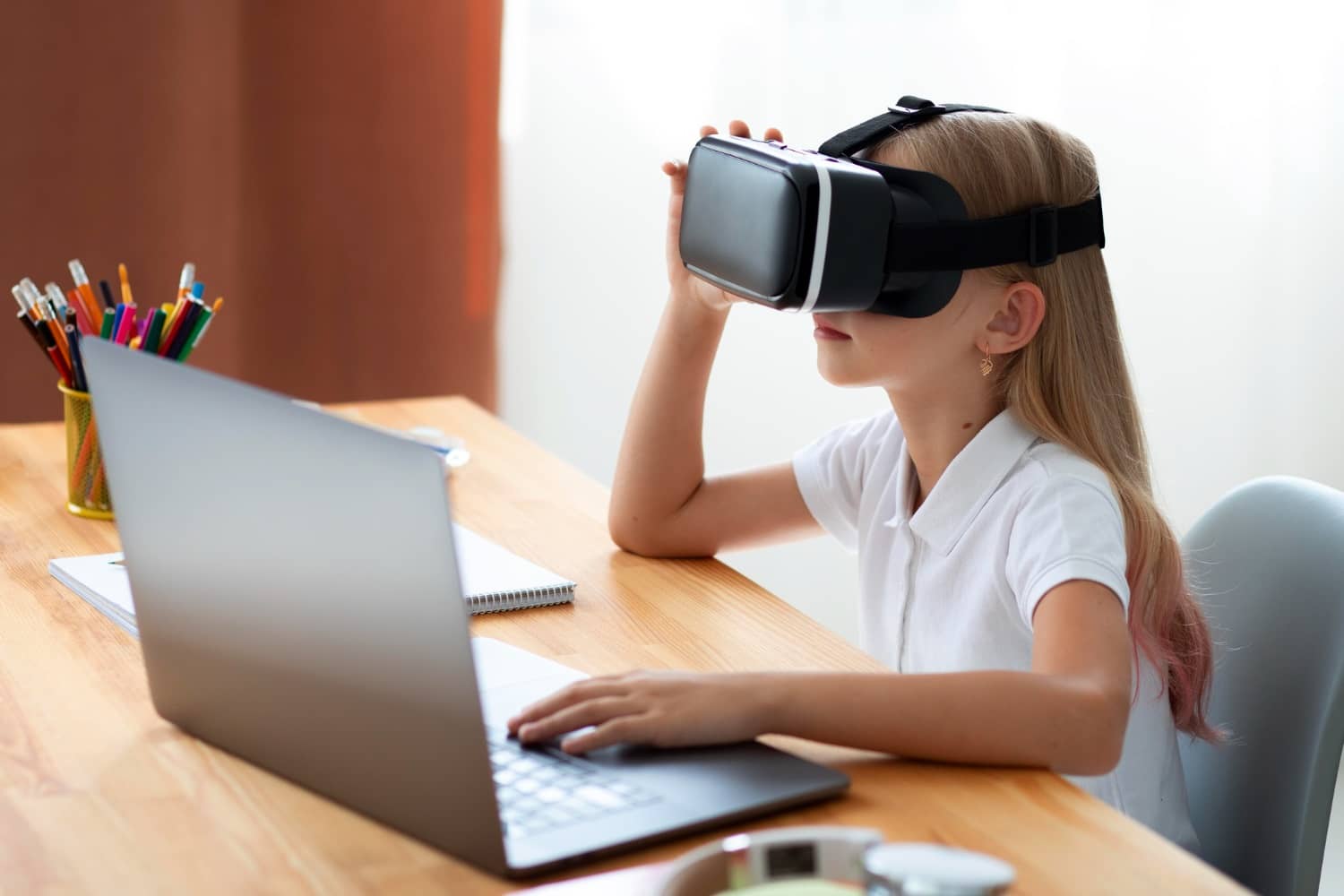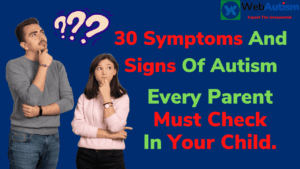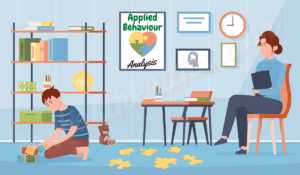In today’s digital age, where technology has become an integral part of our lives, a new phenomenon called “virtual autism” has emerged. Virtual autism refers to a concept where individuals exhibit autistic-like traits and behaviors primarily in the online or virtual realm. In this blog post, we will delve deeper into what virtual autism is, explore its potential causes, and shed light on its implications for individuals and society as a whole.
What is Virtual Autism?
Virtual autism is a term used to describe a set of behaviors resembling those associated with autism spectrum disorder (ASD), which primarily manifest in online interactions. Individuals with virtual autism may experience challenges with social communication, sensory sensitivities, repetitive behaviors, and difficulties in adapting to changing virtual environments.
Characteristics and Symptoms of Virtual Autism
- Social Communication Challenges: People with virtual autism may struggle with understanding social cues, non-verbal communication, and sarcasm in online conversations. They may find it challenging to engage in back-and-forth interactions or understand the nuances of digital communication.
- Sensory Sensitivities: Virtual environments can be overwhelming due to the abundance of sensory stimuli, such as bright screens, flashing lights, and constant notifications. Individuals with virtual autism may experience sensory overload, leading to increased stress levels and difficulty focusing on online tasks.
- Repetitive Behaviors: Similar to individuals with ASD, those with virtual autism may engage in repetitive behaviors in the online world. This could include repetitive typing, clicking, or engaging in specific rituals or routines while navigating virtual platforms.
- Difficulty Adapting to Virtual Environments: Virtual autism can pose challenges when adapting to evolving virtual landscapes, such as new social media platforms or online gaming communities. These individuals may struggle with adjusting to changes, which can cause anxiety and a reluctance to explore new online spaces.
Causes of Virtual Autism
While virtual autism is not recognized as a formal diagnosis, several factors contribute to its development:
- Excessive Screen Time: Spending excessive amounts of time in the virtual world can lead to difficulties in transitioning back to real-life social interactions. This overreliance on digital communication may impede the development of essential social skills and hinder the ability to connect with others offline.
- Lack of Face-to-Face Interaction: Virtual autism may arise from a lack of face-to-face interactions, which are vital for developing empathy, non-verbal communication skills, and social bonding. Insufficient offline social experiences may hinder individuals from effectively navigating social situations in both virtual and real-life settings.
- Anonymity and Disinhibition: The anonymity provided by online platforms can result in a loss of inhibitions and a departure from social norms. This can lead to the adoption of behaviors and communication styles that are atypical or exaggerated, resembling characteristics associated with autism.
Implications and Recommendations
- Awareness and Understanding: Increasing awareness about virtual autism is crucial to ensure that individuals exhibiting autistic-like traits online are not unfairly stigmatized. Recognizing the unique challenges faced by individuals in the virtual realm can help promote empathy and understanding.
- Digital Well-being Practices: Encouraging healthy digital habits, such as limiting screen time, taking regular breaks, and engaging in offline social activities, can help mitigate the risk of developing virtual autism. Balancing virtual interactions with real-life experiences is essential for overall well-being.
- Digital Literacy and Social Skills Training: Educating individuals about effective online communication, recognizing online risks, and fostering digital literacy can equip them with the skills necessary to navigate the virtual world more confidently. Social skills training, both online and offline, can also promote better communication and understanding.
- Cyberbullying and Online Harassment: Virtual autism can be exacerbated by cyberbullying and online harassment, which are prevalent issues in the digital world. Individuals with virtual autism may be more susceptible to these negative experiences, leading to increased social anxiety, withdrawal, and further challenges in online interactions.
- Benefits of Virtual Platforms: While virtual autism primarily focuses on the challenges individuals face, it is essential to acknowledge the potential benefits of virtual platforms for individuals with autism spectrum disorder. Online communities, virtual support groups, and educational resources can provide a safe space for individuals with autism to connect, share experiences, and access valuable information.
Is Virtual Autism an Assessment?
No, “virtual autism” is not recognized as a formal diagnosis or assessment in the field of autism spectrum disorder (ASD) or mental health. The term “virtual autism” is a conceptual idea used to describe a set of behaviors resembling those associated with autism that primarily manifest in the online or virtual realm.
It is important to note that a proper diagnosis of autism spectrum disorder (ASD) requires a comprehensive evaluation by qualified healthcare professionals, such as psychologists, psychiatrists, or developmental pediatricians. These assessments typically involve observing an individual’s behavior, communication skills, social interactions, and developmental history.
The term “virtual autism” is not currently included in the diagnostic criteria outlined in authoritative sources such as the Diagnostic and Statistical Manual of Mental Disorders (DSM-5) or the International Classification of Diseases (ICD-11). It is essential to rely on recognized diagnostic frameworks and seek professional guidance for an accurate assessment and diagnosis of autism or any related conditions.
What’s the difference between Virtual Autism vs. Autism Spectrum Disorder (ASD)?
The term “virtual autism” is a relatively informal concept and does not have a recognized diagnostic status. On the other hand, Autism Spectrum Disorder (ASD) is a well-established neurodevelopmental disorder with specific diagnostic criteria outlined in authoritative sources such as the Diagnostic and Statistical Manual of Mental Disorders (DSM-5) and the International Classification of Diseases (ICD-11).
ASD is a complex condition characterized by persistent challenges in social communication and social interaction, as well as restricted and repetitive patterns of behavior, interests, or activities. It is typically diagnosed based on a comprehensive evaluation of an individual’s behavior, developmental history, and observed difficulties in various domains.
“Virtual autism” is a term used to describe a set of behaviors resembling those associated with ASD, primarily manifesting in the online or virtual realm. It suggests that individuals may exhibit autistic-like traits and difficulties specifically in digital environments. However, as it stands, “virtual autism” is not a recognized diagnostic category and does not hold the same clinical significance as ASD.
It is essential to differentiate between the two terms to avoid confusion. ASD is a well-defined neurodevelopmental disorder with specific diagnostic criteria, while “virtual autism” refers to a conceptual idea highlighting challenges individuals may face in the online world. It is important to rely on recognized diagnostic frameworks and seek professional assessment for an accurate diagnosis of ASD or any related conditions.
Also Read:- Classic Autism vs. Virtual Autism : A Comprehensive Comparison
Conclusion
Virtual autism is a complex phenomenon that has emerged in the digital age. Although not yet recognized as a formal diagnosis, it highlights the challenges individuals face in the online realm, particularly in social communication and adapting to virtual environments.
By raising awareness, fostering digital well-being practices, and promoting digital literacy, we can create a more inclusive and supportive virtual environment for all individuals, irrespective of their neurodiversity.





